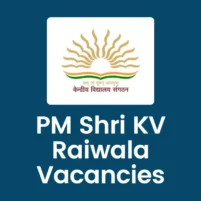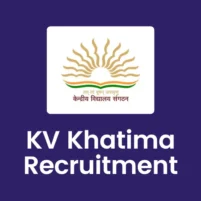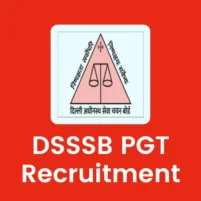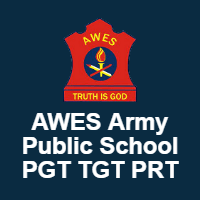Kendriya Vidyalaya Sangathan has initiated selection process for filling up the 3176 Posts of Trained Graduate Teacher (TGT) by direct recruitment. Candidates preparing for the upcoming exam can find here the latest KVS TGT Syllabus and Exam Scheme for all subjects (Hindi, English, Sanskrit, Mathematics, Science, Social Science, AE, P&HE and WE). KVS TGT Syllabus and Exam Scheme 2023 for Hindi, English, Sanskrit, Mathematics, Science, Social Studies, AE, P&HE and WE is given here in detail.
KVS TGT Syllabus and Exam Scheme 2023 (All Subjects)
As per the latest exam scheme, KVS TGT Selection process includes Computer Based Test (CBT) of maximum 180 Marks followed by Professional Competency Test of maximum 60 Marks (Demo Teaching and Interview, each of 30 Marks). KVS TGT exam will consist of total 180 objective type multiple choice questions (01 Mark each). The exam will be of total 03 Hours (or 180 Minutes) duration.
For online application form, vacancy details, salary, educational qualification, notification and other details about the KVS TGT Recruitment, check the information on the link below.
See also: KVS PGT TGT Primary Teacher Recruitment 13404 Posts 2023
KVS TGT Exam for Hindi, English, Sanskrit, Mathematics, Science, Social Studies, Art Education (AE), Physical & Health Education (P&HE) and Work Experience (WE) will be conducted as per the latest scheme below:
KVS TGT Examination Scheme 2023
Written Examination (CBT Online) – As per the latest scheme, the exam question paper for KVS TGT Hindi, English, Social Studies, Science, Sanskrit and Mathematics posts will consist of 04 Parts i.e. Part-1 (Proficiency in Languages), Part-2 (General Awareness, Reasoning and Proficiency in Computers), Part-3 (Perspectives on Education and Leadership) and Part-4 (Subject-specific) as given below.
- PART 1: Proficiency in Languages (20 Marks)
- PART 2: General Awareness, Reasoning and Proficiency in Computers (20 Marks)
- PART 3: Perspectives on Education and Leadership (40 Marks)
- PART 4: Subject-specific (100 Marks)
While, the exam question paper for KVS TGT Physical & Health Education (P&HE), Art Education (AE) and Work Experience (WE) posts will consist of 03 Parts i.e. Part-1 (Proficiency in Languages), Part-2 (General Awareness, Reasoning and Proficiency in Computers) and Part-3 (Subject-specific) as per the pattern below.
- PART 1: Proficiency in Languages (30 Marks)
- PART 2: General Awareness, Reasoning and Proficiency in Computers (50 Marks)
- PART 3: Subject-specific (100 Marks)
Professional Competency Test (All TGTs) – The Professional Competency Test for all TGTs will be of maximum 60 Marks consisting Demo Teaching and Interview each of 30 Marks.
- Demo Teaching – 30 Marks
- Interview – 30 Marks
Candidates shortlisted on the basis of performance in online examination will be called for Professional Competency Test depending on the number of vacancies. Final merit list (result) will be prepared on the basis of performance of candidates in Online Exam and Professional Competency Test taken together. The weightage of Online Exam and Professional Competency Test (Demo Teaching and Interview) will be in the ratio of 70:30.
KVS TGT Syllabus (All Parts and Subjects)
The latest and detailed syllabus for- Proficiency in Languages; General Awareness, Reasoning & Proficiency in Computers; Perspectives on Education and Leadership; and Subject specific Hindi, English, Sanskrit, Mathematics, Science, Social Studies, AE, P&HE and WE; is as follows:
Proficiency in Languages:
(i) General English – Reading comprehension, word power, Grammar & usage
(ii) General Hindi – पठन कौशल, शब्द सामर्थ्य, व्याकरण एवं प्रयुक्ति
General Awareness, Reasoning and Proficiency in Computers:
(i) General Knowledge and Current Affairs related to subject/ discipline
(ii) Reasoning Ability
(iii) Computer Literacy
Perspectives on Education and Leadership (except AE, P&HE and WE):
(a) Understanding the Learner – 10 Questions
(i) Concept of growth, maturation and development, principles and debates of development, development tasks and challenges.
(ii) Domains of Development: Physical, Cognitive, Socio-emotional, Moral etc., deviations in development and its implications.
(iii) Understanding Adolescence: Needs, challenges and implications for designing institutional support.
(iv) Role of Primary and Secondary Socialization agencies. Ensuring Home school continuity.
(b) Understanding Teaching Learning – 15 Questions
(i) Theoretical perspectives on Learning- Behaviorism, Cognitivism and Constructivism with special reference to their implications for: The role of teacher; The role of learner; Nature of teacher-student relationship, Choice of teaching methods, Classroom environment, Understanding of discipline, power etc.
(ii) Factors affecting learning and their implications for: Designing classroom instructions; Planning student activities; Creating learning spaces in school.
(iii) Planning and Organization of Teaching-Learning: Concept of Syllabus and Curriculum, Overt and Hidden Curriculum, Principles of curriculum organization; Competency based Education, Experiential learning etc; Instructional Plans: Year Plan, Unit Plan, Lesson Plan; Instructional material and resources; Information and Communication Technology (ICT) for teaching-learning; Evaluation: Purpose, types and limitations. Continuous and Comprehensive Evaluation, Characteristics of a good tool; Assessment of learning, for learning and as learning: Meaning, purpose and considerations in planning each.
(iv) Enhancing Teaching Learning processes: Classroom Observation and Feedback, Reflections and Dialogues as a means of constructivist teaching.
(c) Creating Conducive Learning Environment – 06 Questions
(i) The concepts of Diversity, disability and Inclusion, implications of disability as social construct, types of disabilities- their identification and interventions.
(ii) Concept of School Mental Health, addressing the curative, preventive and promotive dimensions of mental health for all students and staff. Provisioning for guidance and counselling.
(iii) Developing School and community as a learning resource.
(d) School Organization and Leadership – 06 Questions
(i) Leader as reflective practitioner, team builder, initiator, coach and mentor.
(ii) Perspectives on School Leadership: instructional, distributed and transformative.
(iii) Vision building, goal setting and creating a School development Plan.
(iv) Using School Processes and forums for strengthening teaching learning-Annual Calendar, time-tabling, parent teacher forums, school assembly, teacher development forums, using achievement data for improving teaching-learning, School Self Assessment and Improvement.
(v) Creating partnerships with community, industry and other neighbouring schools and Higher Education Institutes- forming learning communities.
(e) Perspectives in Education – 03 Questions
(i) Role of school in achieving aims of education.
(ii) NEP-2020: Curriculum and Pedagogy in Schools: Holistic & Integrated Learning; Equitable and Inclusive Education: Learning for All; Competency based learning and Education.
(iii) Guiding Principles for Child Rights, Protecting and provisioning for rights of children to safe and secure school environment, Right of Children to free and Compulsory Education Act, 2009.
(iv) Historically studying the National Policies in education with special reference to school education.
(v) School Curriculum Principles: Perspective, Learning and Knowledge, Curricular Areas, School Stages, Pedagogy and Assessment.
Subject-specific Syllabus:
KVS TGT Syllabus for Hindi, English and Sanskrit post/ subject is being given here in detail, whereas the syllabus for Mathematics, Science, Social Studies, AE, P&HE and WE post/ subject is being given with topics. For the detailed syllabus of these post/ subject you can download the pdf file provided by Kendriya Vidyalaya Sangathan directly through the link given at end below.
For the TGT Exam the subject specific syllabus includes the concepts of NCERT/ CBSE Syllabus and Text Books (Classes VI & X), however, the questions will be testing the depth of understanding and application of these concepts at the level of Graduation.
टीजीटी हिन्दी पाठ्यक्रम
खण्ड-क
1. हिन्दी भाषा और व्याकरण।
2. वर्णव्यवस्था – वर्ण, मात्रा, अक्षर।
3. वर्तनी तथा वर्तनी व्यवस्था – वर्ण स्तर पर, शब्द स्तर पर, वाक्य स्तर पर; वर्तनी की सामान्य अशुद्धियाँ।
4. सन्धि भेद-स्वर सन्धि, व्यंजन सन्धि, विसर्ग सन्धि, हिन्दी की अपनी संधियाँ।
5. शब्द-भंडार और शब्द निर्माण – शब्दों का वर्गकरण।
स्रोत, उत्पत्ति या इतिहास के आधार पर – तत्सम, तद्भव, देशज, आगत (विदेशज), संकर।
रचना के आधार पर – मूल या रुढ़ शब्द, व्युत्पन्न शब्द- यौगिक, योगरूढ़।
अर्थ के आधार पर – पर्यायवाची, विलोमार्थी, एकार्थाी, अनेकार्थाी, श्रुति समभिन्नार्थक शब्द।
शब्द निर्माण – उपसर्ग, प्रत्यय, समास, युग्म शब्द, पुनरुक्त शब्द।
6. पद व्यवस्था – शब्द और पद।
पद के भेद – संज्ञा एवं संज्ञा-भेद, लिंग, वचन, कारक; सर्वनाम एवं सर्वनाम-भेद; विशेषण एवं विशेषण-भेद, प्रविशेषण; क्रिया एवं क्रिया-भेद, वाच्य; अव्यय एवं अव्यय-भेद।
7. पद-परिचय – संज्ञा, सर्वनाम, विशेषण, क्रिया, अव्यय।
8. वाक्य-व्यवस्था – वाक्य के अंग- उद्देश्य, विधेय; वाक्य रचना- वाक्य के अनिवार्य तथा ऐच्छिक घटक; पदबंध और उपवाक्य; वाक्य के प्रकार- रचना के आधार पर; अर्थ के आधार पर; वाक्य रचना की अशुद्धियाँ, वाक्य रुपांतरण।
9. मुहावरे और लोकोक्तियाँ।
10. अलंकार- अनुप्रास, पुनरुक्ति, यमक, उपमा, उत्प्रेक्षा, रूपक, अतिशयोक्ति, मानवीकरण।
खण्ड-ख
अवबोधन तथा रचनात्मक अभिव्यक्ति।
11. पाठ-बोधन – अपठित पद्य एवं गद्य
12. लिखित रचना-
अ- पत्र लेखन-प्रार्थना पत्र, आवेदन पत्र, बधाई पत्र, शुभकामना पत्र, निमंत्रण पत्र, संवेदना पत्र, शिकायती पत्र, समस्या-सम्बन्धी (प्रकाशनार्थ) पत्र।
आ- अनुच्छेद लेखन, स्ववृत्त लेखन, संवाद लेखन, विजापन लेखन, सूचना लेखन।
पाठ्यपुस्तक- वसंत, भाग 1 – वहचिड़ियाजो, बचपन, नादान दोस्त, चाँद से थोड़ी सी गप्पें, अक्षरों का महत्व, पार नज़र के, साथी हाथ बढ़ाना, ऐसे-ऐसे, टिकट अलबम, झांसी की रानी, जो देखकर भी नहीं देखते, संसार पुस्तक है, मैं सबसे छोटी होऊँ, लोकगीत, नौकर, वन के मार्ग में, सॉस-साँस में बांस।
पूरक पाठ्य पुस्तक-बाल राम कथा – अवध पुरी में राम, जंगल और जनकपुर, दो वरदान, राम का वनगमन, चित्रकूट में भरत, दंडक वन में दस वर्ष, सोने का हिरन, सीता की खोज, राम और सुग्रीव, लंका में हनुमान, लंका विजय, राम का राज्याभिषेक।
पाठ्य पुस्तक- वसंत, भाग 2 – हम पंछी उन्मुक्त गगन के, दादीमाँ, हिमालय की बेटियाँ, कठपुतली, मिठाई वाला, रक्त और हमारा शरीर, पापा खो गए, शाम एक किशान, चिड़िया की बच्ची, अपूर्व अनुभव, रहीम के दोहे, कंचा, एक तिनका, खान पान की बदलती तस्वीर, नीलकण्ठ, भोर और बरखा, वीर कुँवर सिंह, संघर्ष के कराण मैं तुनक मिजाज हो गया, आश्रम का अनुमानित व्यय, विप्लव गायन।
पूरक पाठ्य पुस्तक – बाल महाभारत कथा
पाठ्यपुस्तक- वसंत, भाग 3 – ध्वनि, लाख की चूड़ियाँ, बस की यात्रा, दीवानों की हस्ती, चिट्ठियों की अनूठी दुनिया, भगवान के डाकिए, क्या निराश हुआ जाए, यह सब से कठिन समय नहीं, कबीर की साखियाँ, कामचोर, जब सिनेमा ने बोलना सीखा, सुदामा चरित, जहाँ पहिया है, अकबरी लोटा, सूर के पद, पानी की कहानी, बाज़ और सॉंप, टोपी।
पूरकपाठ्यपुस्तक- भारतकीखोज – अहमद नगर का किला, तलाश, सिंधु घाटी सभ्यता, युगों का दौर, नयी समस्याएँ, अंतिम दौर: एक, अंतिम दौर: दो, तनाव, दो पृष्ठ भूमियाँ-भारतीय और अँग्रेजी।
पाठ्यपुस्तक- क्षितिजभाग 1 – दो बैलों की कथा, ल्हासा की ओर, उपभोक्ता वाद की संस्कृति, साँवले सपनों की याद, नाना साहब की पुत्री देवी मैना को भस्म कर दिया गया, प्रेम चंद के फटे जूते, मेरे बचपन के दिन, एक कुत्ता और एक मैना, साखियाँ एवं सबद, वाख, सवैये, कैदी और कोकोला, ग्रामश्री, चंद्र गहना से लौटती बेर, मेघ आए, यमराज की दिशा, बच्चे काम पर जा रहे हैं।
पूरक पाठ्य पुस्तक- कृतिका भाग 1 – इस जल प्रलय में, मेरे संग की औरतें, रीढ़ की हड्डी, माटी वाली, किस तरह आखिरकार मैं हिन्दी में आया।
पाठ्य पुस्तक- क्षितिज भाग 2
पद- ऊधौ तुम हो अति बड़भागी, मन की मन ही मॉंझ रही, हमारे हरि हारिल की लकरी, हरि है राजनीति पढ़ि आए; राम-लक्ष्मण परशुराम संवाद, सवैया- पॉंयनिनूपुर, कवित्त – डारद्रुमपलना, कवित्त – फटकिसिलानि, आत्मकथ्य, उत्साह, अटनहीं रही है, यह दंतुरित मुसकान, फसल, छाया मत छूना, कन्या दान, संगतकार,
नेता जी का चश्मा, बाल गोबिन भगत, लखनवी अंदाज़, मानवीयकरुणा की दिव्य चमक, एक कहानी यह भी, स्त्री-शिक्षा के विरोधी कुतर्कों का खंडन, नौबतखाने में इबादत, संस्कृति।
पूरक पाठ्यपुस्तक- कृतिका भाग 2 – माता का अँचल, ज़ॉर्ज पंचम की नाक, साना साना हाथ जोड़ि, एही ठैंया झुलनी हेरानी हो रामा, मैं क्यों लिखता हूँ।
TGT English Syllabus
(i) Who Did Patrick’s Homework?, How the Dog Found Himself a New Master?, Taro’s Reward, An Indian-American Woman in Space: Kalpana Chawla, A Different Kind of School , Who I Am (Part-1) Fair Play, The Banyan Tree, A House, A Home, The Kite, The Quarrel, Beauty, Where Do All The Teachers Go? The Wonderful Words, Vocation.
(ii) A pact with the Sun (Supplementary Reader): A tale of two birds, The Friendly Mongoose, The Shepherd’s Treasure, Tansen, The Monkey and the Crocodile, The wonder called sleep, A pact with the Sun.
(iii) Three Questions, The Squirrel, A Gift of Chappals, The Rebel, The Shed, Gopal and the Hilsa Fish, The Ashes that Made the Trees Bloom, Chivvy, Quality, Trees, Experts Detectives, Mystery of the talking fan, Invention of Vita Work, Dad and the Cat and the Tree, Meadow Surprises, Garden Shake.
(iv) An Alien Hand (Supplementary Reader) : The Tiny Teacher, Bringing up Kari, Golu Grows a nose, Chandni, The Bear story, A Tiger in the House, An Alien Hand.
(v) The Best Christmas Present in the World, The Tsumani, Glimpses of the Past, Bepin Babu, The Summit Within, The Ant and the Cricket, Geography Lesson, The Last Bargain, The School Boy, This is Jody’s Fawn, The Duck and the Kangaroo, A visit to Cambridge, A short Monsoon Diary, On the grasshopper and the Cricket.
(vi) How the Camel Got his Hump, Children at Work, The Selfish Giant, The Treasure Within, Princess September, The Fight, Jalebis.
(vii) The Fun They Had, The Sound of Music, The Little Girl, A Truly Beautiful Mind, The Snake and the Mirror, My Childhood, Reach For The Top, Kathmandu, If I were You, The Road Not Taken, Wind, Rain on The Roof, The Lake Isle of Innisfree, A Legend of The Northland, No Men Are Foreign, On Killing a Tree, A Slumber Did My Spirit Seal, The Lost Child, The Adventures of Toto, Iswaran the Storyteller, In the Kingdom of Fools, The Happy Prince, The Last Leaf, A House is not a Home, The Beggar.
(viii) Topics: A Letter to God, Nelson Mandela – Long Walk to Freedom, Two Stories About Flying, From the Diary of Anne Frank, Glimpses of India, Mijbil the Otter, Madam Rides the Bus, The Sermon at Benares, The Proposal, Dust of Snow , Fire and Ice, A Tiger in the Zoo, How to Tell Wild Animals, The Ball Poem, Amanda!, The Trees, Fog, The Tale of Custard the Dragon, For Anne Gregory, A Triumph of Surgery, The Thief’s Story, The Midnight Visitor, A Question of Trust, Footprints Without Feet, The Making of a Scientist, The Necklace, Bholi, The Book That Saved the Earth.
(ix) Grammar: Determiners, Linking Words, Adverbs (Place and Types), Tense Forms, Clauses, Passivation, Adjectives (Comparative and Superlative Forms), Modal Auxiliaries, Word Order in Sentence Types, Reported Speech, Sequence of Tenses, Non-Finites (Infinitives, Gerunds, Participles, Complex and Compound Sentences, Phrasal Verbs and Prepositional Phrases, Cohesive Devices, Punctuation (Semicolon, Colon, Dash, Hyphen, Parenthesis or Use of Brackets and Exclamation Mark).
टीजीटी संस्कृत पाठ्यक्रम
रुचिरा, प्रथमोभाग:, एनसीईआरटी, नई दिल्ली द्वारा प्रकाशित
शब्दपरिचय:-I; शब्दपरिचय:-II; शब्दपरिचय:-III; विद्यालयः ; वृक्षाः ; समुद्रतटः ; बकस्यप्रतीकारः ; सूक्तिस्तबकः ; क्रिडास्पर्धा ; कृषिकाःकर्मवीराः ; दशमः त्वम् असि ; विमानयानं रचयाम ; अहह आः च ; कारक-विभक्ति-परिचय:, शब्दरूपाणि (अकारान्त-उकारांत पुँर्ल्लिंगशब्दरुपाणि), धातुरुपाणि (लट्लकारे प्रथमपुरुष:, सर्वनामपदपरिचय:, संख्याज्ञानम् ।
रुचिरा, द्वितीयोभाग:, एनसीईआरटी, नई दिल्ली द्वारा प्रकाशित
सुभाषितानि ; दुर्बृद्धिः विनश्यति ; स्वावलम्बनम् ; पण्डिता रमाबाई ; सदाचारः ; सड्कल्पः सिद्धिदायक: ; त्रिवर्ण: ध्वजः ; अहमपि विद्यालयं गमिष्यामि; विश्वबन्धुत्वम; समवायो हि दुर्जयः ; विद्याधनम् ; अमृतं संस्कृतम् ; लालनगीतम् ; परिशिष्टवर्णविचार:, कारकम, शब्दरुपाणि, धातुरुपाणिच।
रुचिरा, तृतीयोभाग:, एनसीईआरटी, नई दिल्ली द्वारा प्रकाशित
सुभाषितानि ; बिलस्य वाणी न कदापि मे श्रुता;. डिजीभारतम् ; सदैव पुरतो निधेहि चरणम् ; कण्टकेनैव कण्टकम् ; गृहं शून्यं सुतां विना ; भारतजनताहम् ; संसारसागरस्य नायका: ; सप्तभगिन्य: ; नीतिनवनीतम् ; सावित्रीबाईफुले ; कः रक्षति कः रक्षित: ; क्षितौ राजते भारतस्वर्णभूमि: ; आर्यभट: ; परिशिष्टम्सन्धिः,. कारकम्, शब्दरुपाणि (मातृ-अस्मद्-युष्मद्-स्वसृ-राजन् च) ; धातुरुपाणि (पठ्-खाद्-इच्छ् च धातवः) ; प्रत्यय: (तुमुन्-क्त्वा-ल्यप् च) ।
शेमुषी, प्रथमोभाग:, एनसीईआरटी, नई दिल्ली द्वारा प्रकाशित
स्वर्णकाकः ; गोदोहनम् ; सूक्तिमौक्तिकम् ; भ्रान्तोबालः ; सिकतासेतु: ; जटायोः शौर्यम् ; पर्यावरणम् ; वाङ्मन: प्राणस्वरूपम् व्याकरणवीथि:, सन्धि: (स्वर:-दीर्घ:, गुण:, वृद्धिः, यण्, अयादि ; व्यंजन-जश्त्वसंधि:, ‘म्’ स्थाने अनुस्वार:, ; विसर्गसंधि:- विसर्गस्य उत्वम्-रत्वम्) ; शब्दरूपाणि (बालक-कवि-साधु-पितृ-लता-नदी-मातृ-राजन-भवत्-विद्वस्-अस्मद्-युष्मद्-तत्-इदम्-किम) ।
धातुरूपाणि (पठ्-गम्-वद्-भू-क्रीड्-नी-दृश्-शक्-जा-अस्-कृ-दा-क्री-श्रु-पा-सेव्-लभ्) ; कारकविभक्तय: ; प्रत्यया: (कत्वा-तुमुन्-ल्यप्-क्तवतु-शतृ-शानच्-क्त) ; संख्याज्ञानम् ; उपसर्गा: (द्वाविंशति: ; अव्ययानि (स्थानबोधकानि:-अत्र-तत्र-अन्यत्र-सर्वत्र-यत्र-एकत्र-उभयत्र ; कालबोधकानि:-यदा-तदा-सर्वदा-एकदा-पुरा-अधुना-अद्य-श्व:-हय: ; प्रश्नबोधकानि:-किम्-कुत्र-कति-कदा-कुत:-कथम्-किमर्थम् ; अन्यानि:-च-अपि-यदि-तर्हि- यथा-तथा-सम्यक्-एव ) ; रचनाप्रयोग, ; पत्रलेखनं।
शेमुषी, द्वितीयोभाग:, एनसीईआरटी, नईदिल्ली द्वारा प्रकाशित
शुचिपर्यावरणम् ; बुद्धिर्बलवती सदा; शिशुलालनम् ; जननीतुल्यवत्सला ; सुभाषितानि ; सौहार्दंप्रकृतेः शोभा ; विचित्र:साक्षी ; सूक्तयः अन्योक्तय: व्याकरणवीथि:,
सन्धि: (व्यंजन-वर्गीयप्रथमवर्णस्य तृतीयवर्णे परिवर्तनं, प्रथमवर्णस्य पच्चमवर्णे परिवर्तनम् ; विसर्गसंधि:- विसर्गस्य उत्वम्-रत्वम्, विसर्गलोप:, विसर्गस्य स्थाने स्-श्-ष् ) ; अव्यय: (उच्चै:-च-श्व:-ह्य:-अद्य-अत्र-तत्र- यत्र-कुत्र-इदानीम्-अधुना-सम्प्रति-साम्प्रतं-यदा-तदा-कदा-सहसा-वृथा-शनै:-अपि-कुत:-इतस्ततः-यदि-तर्हि-यावत्-तावत्)।
प्रत्यय: (तद्धिता:-मतुप्-ठक्-त्व-तल्; स्त्रीप्रत्ययौ-टाप्-ङीप्), समासः (तत्पुरुष:-विभक्ति:, बहुब्रीहि:, अव्ययीभाव:-अनु,उप,सह,निर्,प्रति,यथा, द्वंद्व:-केवलम् इतरेतर:), वाच्यपरिवर्तनम् (केवलं लट्लकारे-कर्तृ, कर्म, क्रिया), रचनाप्रयोग, समय: , अशुद्धि: संशोधनं ; पत्रलेखनं।
TGT Mathematics Syllabus
Real Numbers, Polynomials, Linear Equations in Two Variables, Pair of Linear Equations in Two Variables, Quadratic Equations, Arithmetic Progressions, Coordinate Geometry, Introduction to Euclid’s Geometry, Lines and Angles, Triangles, Quadrilaterals, Circles, Areas, Surface Areas and Volumes, Statistics, Probability, Trigonometry, Trigonometric Identities, Heights and Distances
TGT Science Syllabus
Matter-Nature and Behaviour, Nature of matter, Particle nature and their basic units, Structure of atoms, Chemical reactions, Acids, bases and salts, Metals and nonmetals, Carbon compounds, Cell – Basic Unit of life, Tissues, Organs, Organ System, Organism, Life processes, Control and co-ordination in animals and plants, Reproduction, Heredity and Evolution, Motion, Force and Newton’s laws, Gravitation, Floatation, Work, Energy and Power, Sound, Effects of Current, Magnetic effects of current, Food Production, Natural Phenomena, Our environment.
TGT Social Studies Syllabus
Events and Processes: The French Revolution, Socialismin Europe and the Russian Revolution, Nazism and the Rise of Hitler; Livelihoods, Economies and Societies: Forest Society and Colonialism, Pastoralists in the Modern World.
Contemporary India I – India, Physical Features of India, Drainage, Climate, Natural Vegetation and Wild Life, Population; Democratic Politics I: What is Democracy? Why Democracy? Constitutional Design, Electoral Politics, Working of Institutions, Democratic Rights; Economics: The Story of Village Palampur, People as Resource, Poverty as a Challenge, Food Security in India.
India and the Contemporary World II: Events and Processes- The Rise of Nationalism in Europe, Nationalism in India; Livelihoods, Economies and Societies- The Making of a Global World, The Age of Industrialization; Everyday Life, Culture and Politics- Print Culture and the Modern World.
Contemporary India II: Resources and Development, Forest and Wildlife, Water Resources, Agriculture, Minerals and Energy Resources, Manufacturing Industries, Life Lines of National Economy.
Democratic Politics II: Power Sharing, Federalism, Gender, Religion and Caste, Political Parties, Outcomes of Democracy; Understanding Economic Development: Development, Sectors of the Indian Economy, Money and Credit, Globalization and the Indian Economy, Consumer Right.
TGT AE Syllabus (Art Education)
The questions will be based on testing the depth of understanding and application of the concepts at the level of Graduation.
Drawing and Painting – History of Indian Art: Art of Indus Valley (Harappan and Mohenjo-daro) (2500 BC to 1500 BC); Buddishist, Jain and Hindu Art; Temples Sculpture, Bronzes and Indo-Islamic Architecture; The Rajasthani and Pahari Schools of Miniature painting (16th Century AD to 19th Century AD); The Mughal and Deccan Schools of Miniature Painting (16th Century AD to 19th Century AD); The Bengal school and the Modern trends in Indian Art.
TGT P&HE Syllabus (Physical & Health Education)
The questions will be based on testing the depth of understanding and application of the concepts at the level of Graduation.
Concept of Physical Education, Physiological aspects of physical education, Psychological Aspects of Physical Education, Physical Fitness and Wellness, Training Methods, Sociological Aspects of Physical Education, History of the game/sport, Health Education, Communicable Diseases, Contemporary Health Problems, Health living, Family Health Education, Prevention and first aid for common sports injuries.
TGT WE Syllabus (Work Experience)
The questions will be based on testing the depth of understanding and application of the concepts at the level of Diploma.
Circuit Fundamentals, Resistive Circuits, Kirchhoff’s Laws, Network Theorems, Passive Circuit Elements, Energy Sources, Magnetism and Electromagnetism, A.C. Fundamentals, Series A.C. Circuits, Time Constant, Timing Circuits and Filters, Solid State Physics.
The P-N Junction, P-N Junction Diode, Special Diodes, Optoelectronic Devices, DC Power Supplies, The Basic Transistor, Transistor Characteristics and Approximations, Load Lines and DC Bias Circuits, Transistor Equivalent Circuits and Mode, Single- Stage Transistor Amplifiers, Multistage Amplifiers.
Decibels and Frequency Response, Feedback Amplifier, Field Effect Transistor, Breakdown Devices, Sinusoidal Oscillators, Noninusoidal Oscillators, Modulation and DeModulation, Integrated Circuits, Number Systems, Logic Gates, Boolean Algebra, Logic Families, Transducer, Electronic Instruments.
We tried our best to provide you here the latest exam scheme along with syllabus for convenience and easy understanding. For the Detailed KVS TGT Syllabus of Mathematics, Science, Social Studies, AE, P&HE and WE post/ subject, please download the combined syllabus pdf as provided by the kvsangathan.nic.in below.
See also: KVS PGT Syllabus All Subjects Exam 1409 Posts 2023
See also: KVS PRT Syllabus Primary Teacher Exam 6414 Posts 2023
Download KVS Syllabus (Combined)
KVS Exam Dates and Admit Card
Search any information available on this site by the help of the search box above. You may visit later for other latest updates related to KVS TGT Syllabus and Exam Scheme for all subjects.



